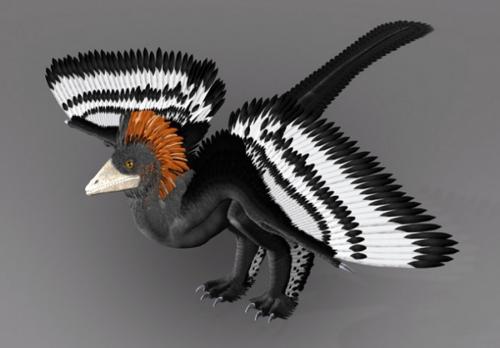
Geological processes can affect evidence of the original colors of fossil feathers, according to new research by Yale University scientists, who said some previous reconstructions of fossil bird and dinosaur feather colors may now merit revision.
The discovery reveals how the evidence for the colors of feathers — especially melanin-based colors — can be altered during fossilization, and suggests that past reconstructions of the original colors of feathers in some fossil birds and dinosaurs may be flawed.
“Here we have concrete experimental evidence for how the colors of feathers are affected by pressure and temperature during burial,” said lead researcher Maria E. McNamara, a former Yale postdoctoral researcher now based at the University of Bristol in the United Kingdom. The study was published online in the journal Biology Letters on March 27.
Derek E. G. Briggs, the Yale University paleontologist whose lab hosted the research, is a co-author. Briggs also is director of the Yale Peabody Museum of Natural History.
In modern birds, black, brown, and some reddish-brown colors are produced by tiny granules of the pigment melanin. These features — called melanosomes — are preserved in many fossil feathers, and their precise size and shape have been used to reconstruct the original colors of fossil feathers.
“The problem was that we had no idea whether melanosomes could survive the fossilisation process intact,” said McNamara. “Our experiments show that this is not the case. Our results cast a cautionary light on studies of fossil feather color and suggest that some previous reconstructions of the original plumage colors of fossils may not be accurate.”
Using a novel experimental technique pioneered in the group’s recent study on the colors of fossil insects, McNamara’s interdisciplinary team simulated high pressures and temperatures that are found deep under the Earth’s surface. The team used feathers of different colors and from different species, but the geometry of the melanosomes in all feathers changed during the experiments.
“This study will lead to better interpretations of the original plumage colors of diverse feathered dinosaurs and fossil birds,” said Briggs. “Fossils that have experienced relatively mild burial conditions will yield the most accurate reconstructions.”
Co-author Zhengrong Wang, the Yale geochemist who designed the experimental apparatus, said that the experimental technique used by the team is going from strength to strength. “This approach can be used to investigate broad questions relating to the fossilization process and we have several new projects in the pipeline.”
The paper is titled “Experimental maturation of feathers: implications for reconstructions of fossil feather colour.”
For more news of related research by the same authors, see this report.
The research was supported by a Marie Curie International Mobility Fellowship through University College Dublin and the National Science Foundation.